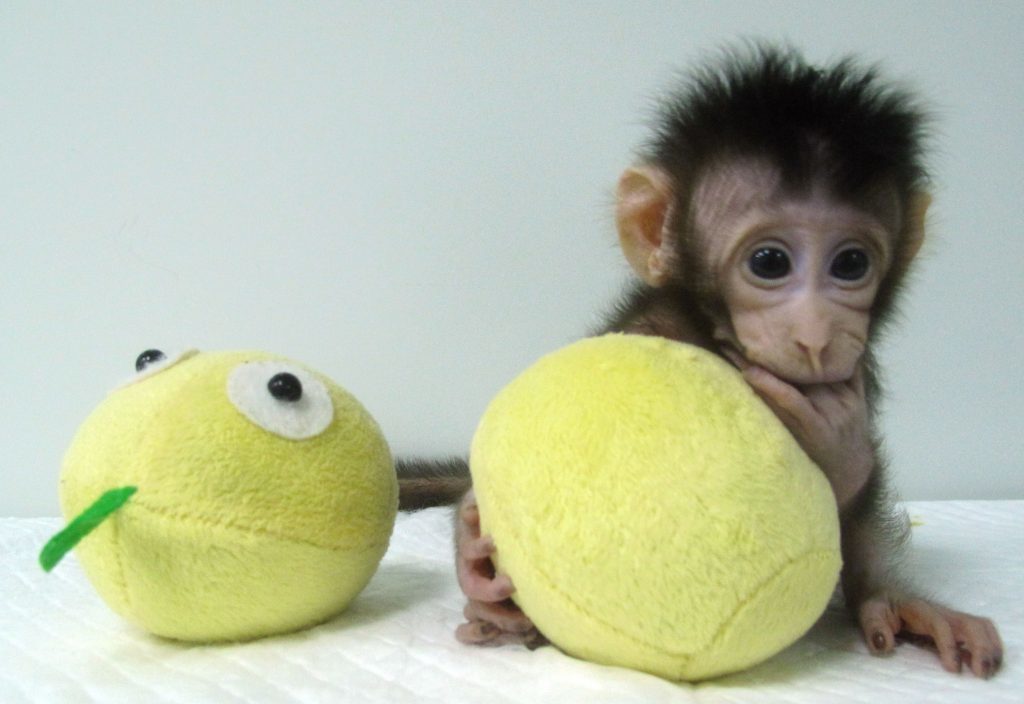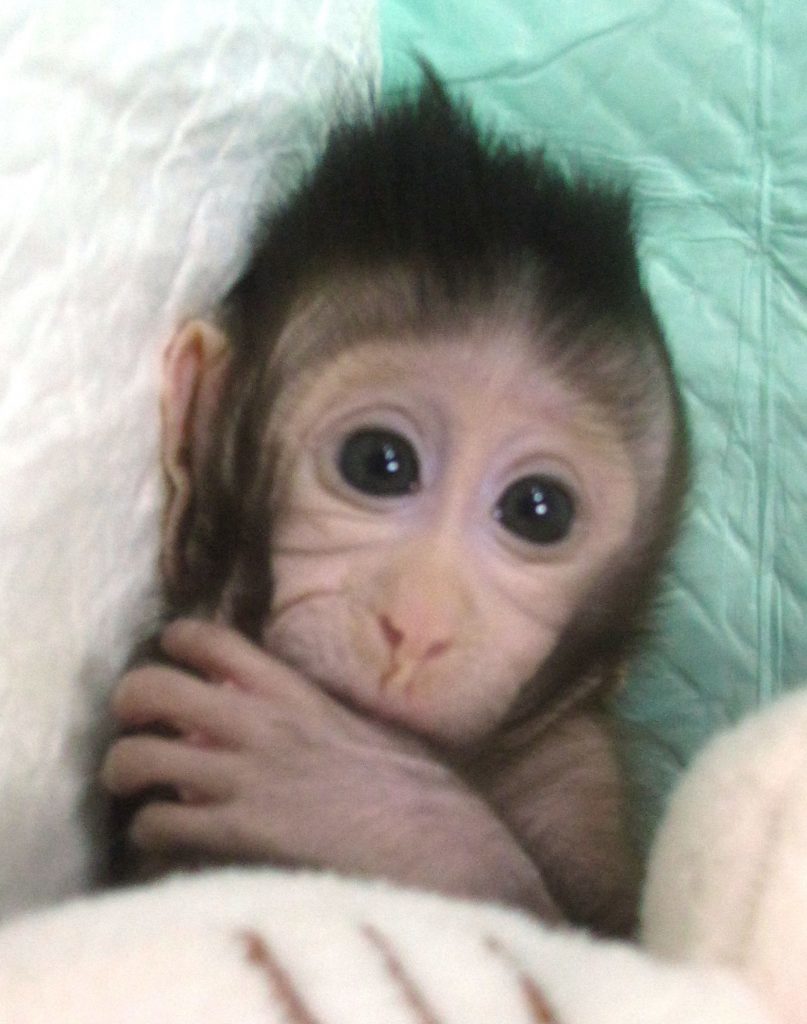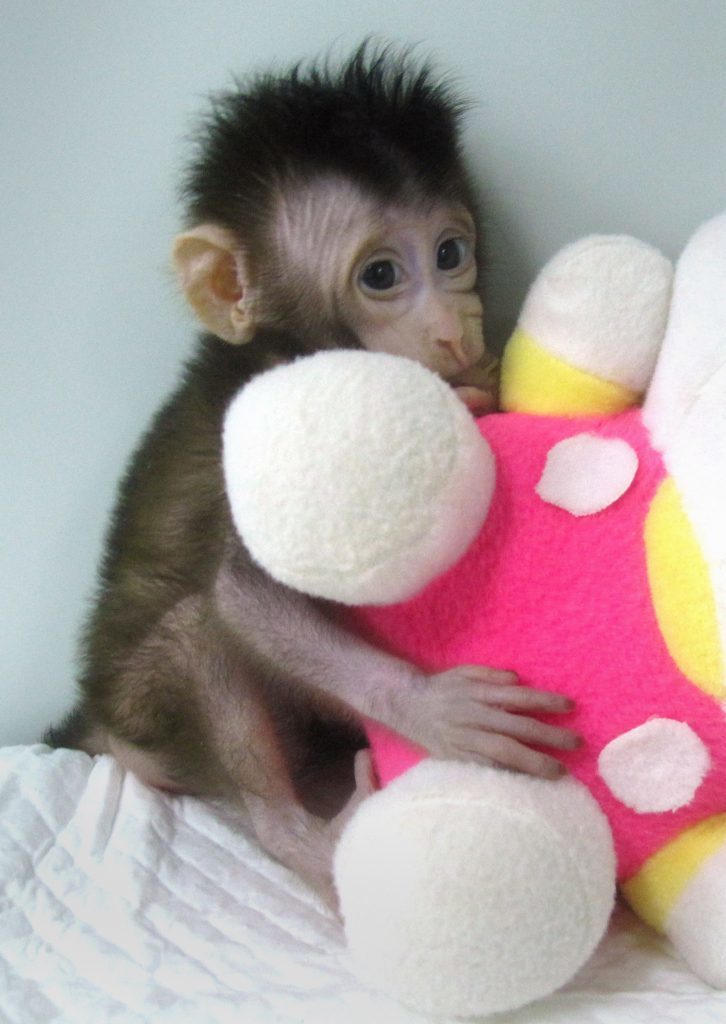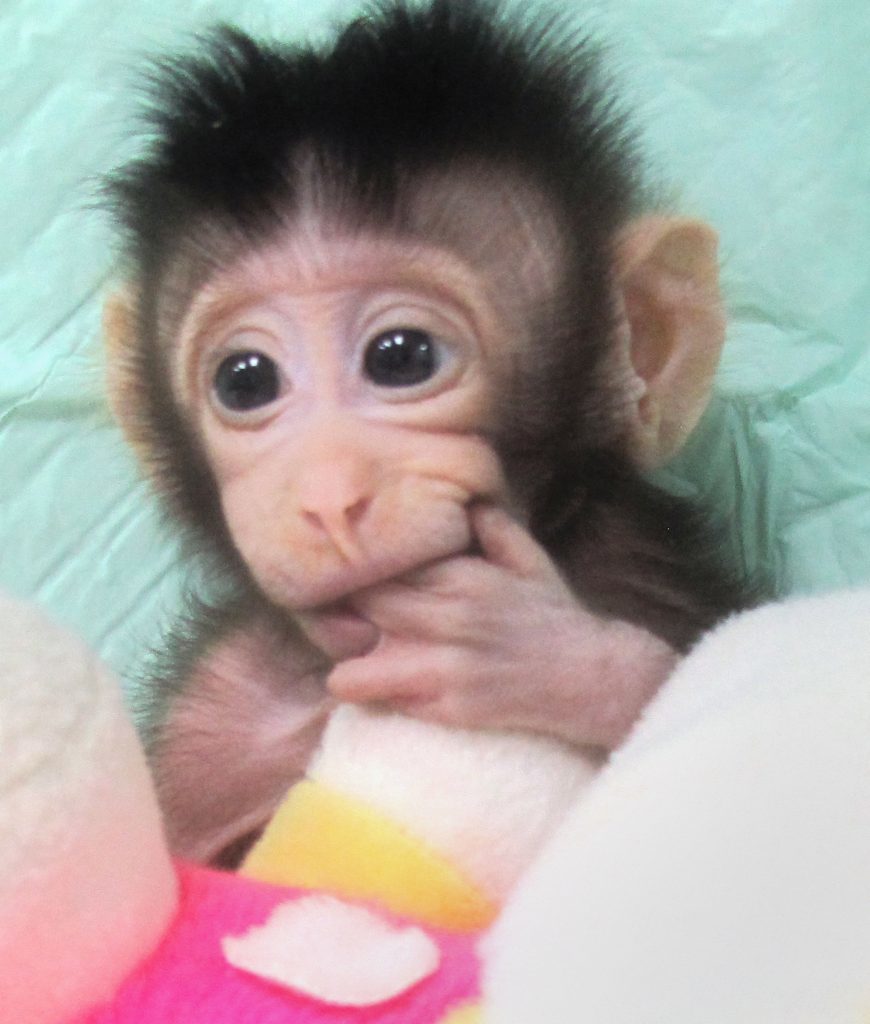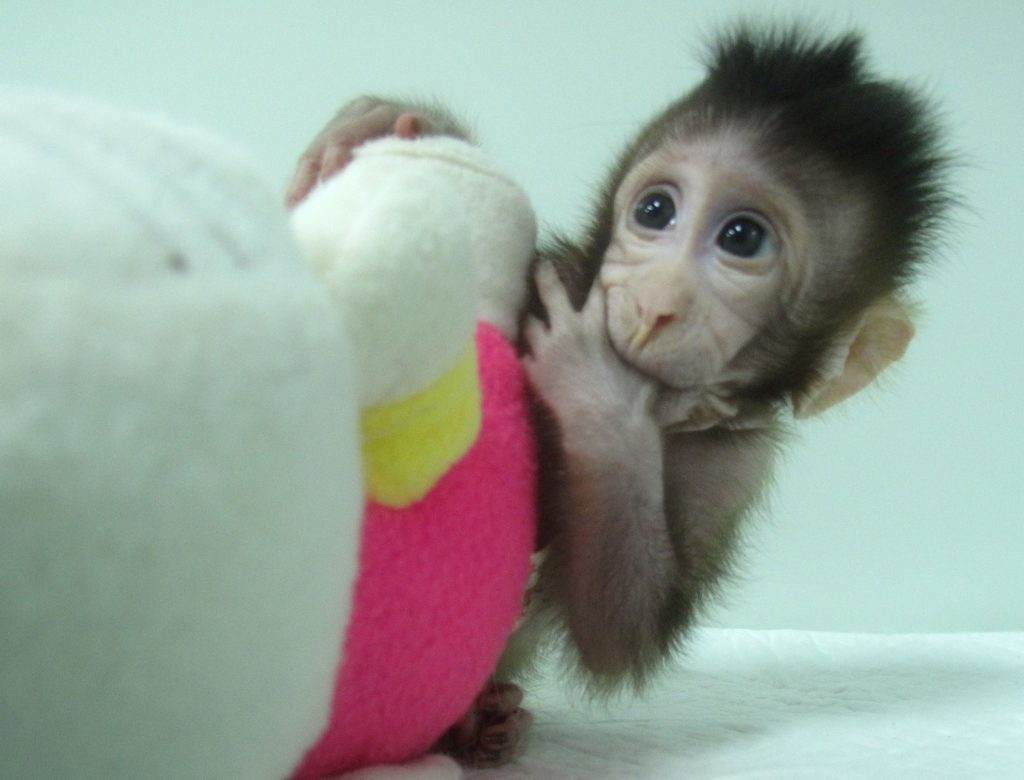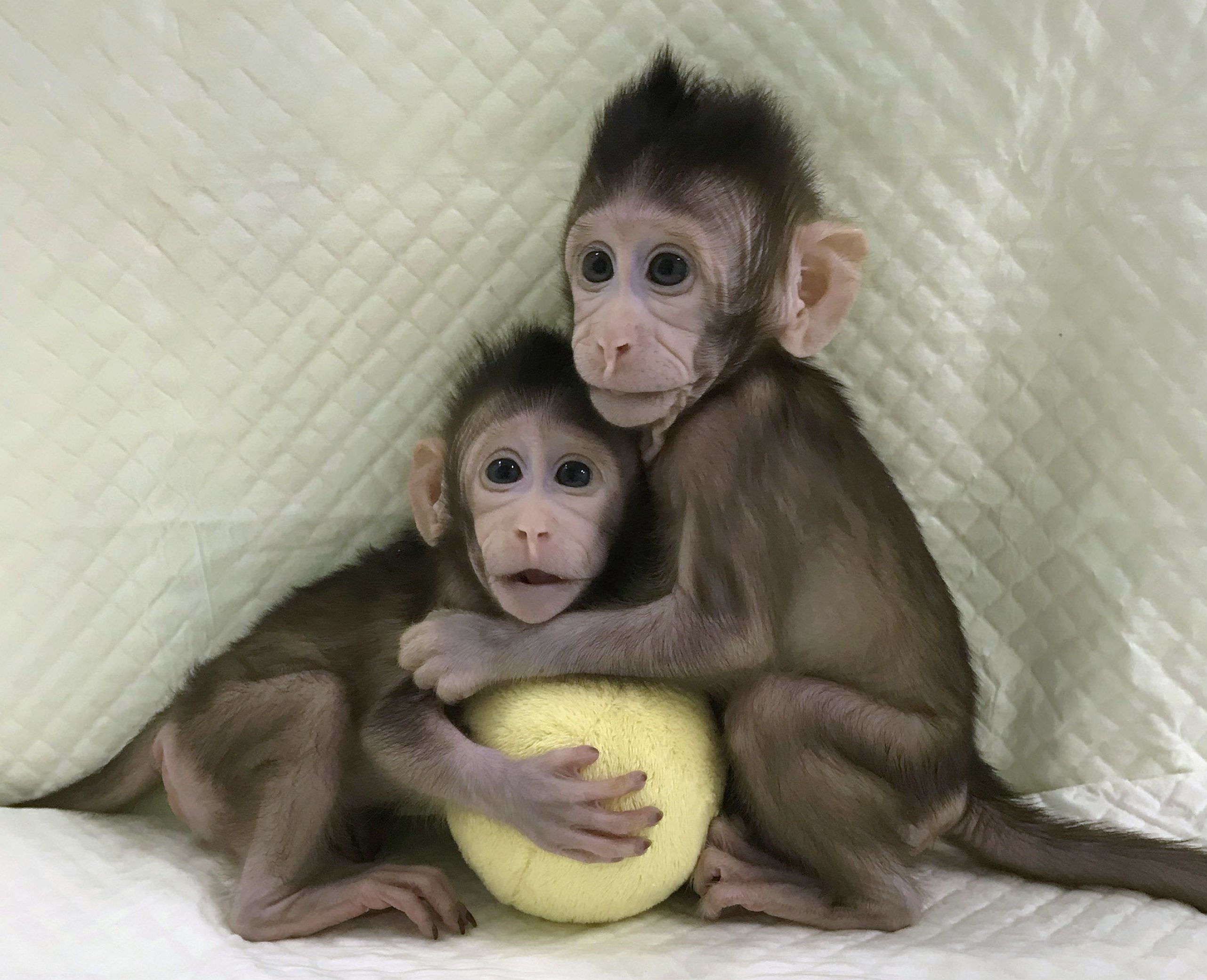
TWO monkeys have followed in the footsteps of Dolly the Sheep by becoming the world’s first primates to be cloned from transferred DNA.
Identical long-tailed macaques Zhong Zhong and Hua Hua were born eight and six weeks ago respectively at a laboratory in China.
The success marks a watershed in cloning research and raises major ethical questions.
The aim of the scientists was to pave the way for populations of genetically uniform monkeys that can be customised for ground-breaking research into human diseases.
But the cloning of monkeys will be seen by some as a step too far towards the eventual creation of tailor-made humans.
Dolly made history 20 years ago after being cloned at the Roslin Institute in Edinburgh.
It was the first time scientists had managed to clone a mammal from an adult cell, taken from the udder of a Finn Dorset sheep.
Since then many other mammals have been cloned using the same single cell nuclear transfer (SCNT) technique, which involves transferring cell nucleus DNA to a donated egg cell that is then prompted to develop into an embryo.
They include sheep, cattle, pigs, dogs, cats, mice and rats – but until now, there has never been an SCNT-cloned monkey.
The Chinese team led by Dr Qiang Sun, director of the Non-Human Primate Research Facility at the Chinese Academy of Sciences Institute of Neuroscience, Shanghai, made the breakthrough by using DNA from foetal connective tissue cells.
After the DNA was transferred to donated eggs, genetic reprogramming was used to switch on or off genes that would otherwise have suppressed embryo development.
Zhong Zhong and Hua Hua were the result of 79 nuclear transfer attempts. Two other monkeys were initially cloned from a different type of adult cell, but failed to survive.
Dr Sun said: “We tried several different methods, but only one worked. There was much failure before we found a way to successfully clone a monkey.”
The research is reported in the latest edition of the journal Cell.
Cloned monkeys would allow scientists to study “a lot of questions” about primate biology, Dr Sun stressed.
He added: “You can produce cloned monkeys with the same genetic background except the gene you manipulated. This will generate real models not just for genetically based brain diseases, but also cancer, immune or metabolic disorders and allow us to test the efficacy of the drugs for these conditions before clinical use.”
The scientists insisted they followed strict international guidelines for animal research, set by the US National Institutes of Health.
Co-author Dr Muming Poo, another member of the Chinese Academy of Sciences team, said: “We are very aware that future research using non-human primates anywhere in the world depends on scientists following very strict ethical standards.”
British cloning expert Professor Robin Lovell-Badge, from The Francis Crick Institute, London, said he did not believe the research increased the chances of humans being cloned.
He said: “The work in this paper is not a stepping-stone to establishing methods for obtaining live-born human clones.
“This clearly remains a very foolish thing to attempt. It would be far too inefficient, far too unsafe, and it is also pointless. Clones may be genetically identical, but we are far from only being a product of our genes.”
Technically Zhong Zhong and Hua Hua are not the first primate clones. That title goes to Tetra, a rhesus monkey born in 1999 through the much simpler method of embryo splitting that does not employ DNA transfer.
It is the same process that leads to the birth of natural twins, but can only generate up to four offspring at a time.

Enjoy the convenience of having The Sunday Post delivered as a digital ePaper straight to your smartphone, tablet or computer.
Subscribe for only £5.49 a month and enjoy all the benefits of the printed paper as a digital replica.
Subscribe